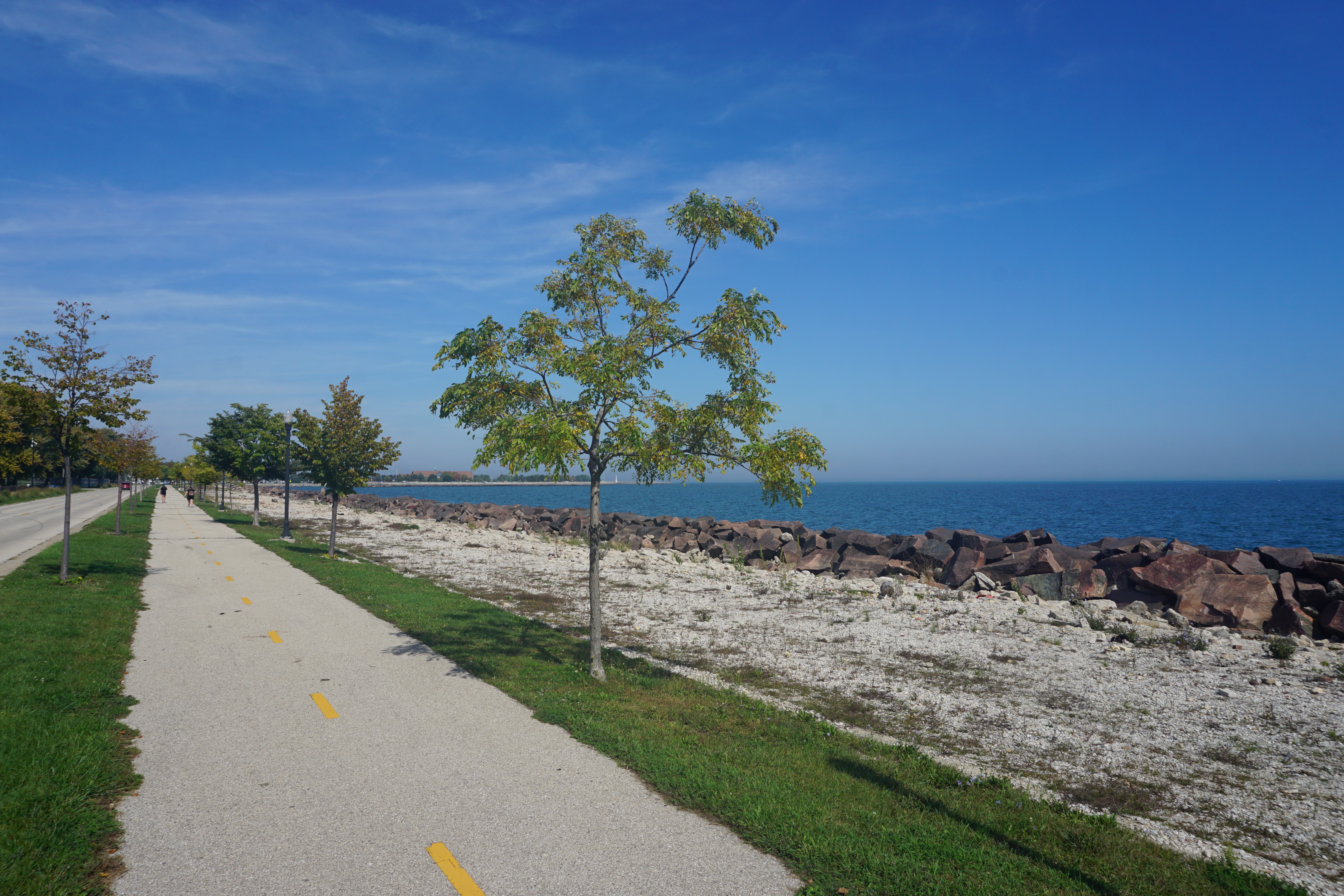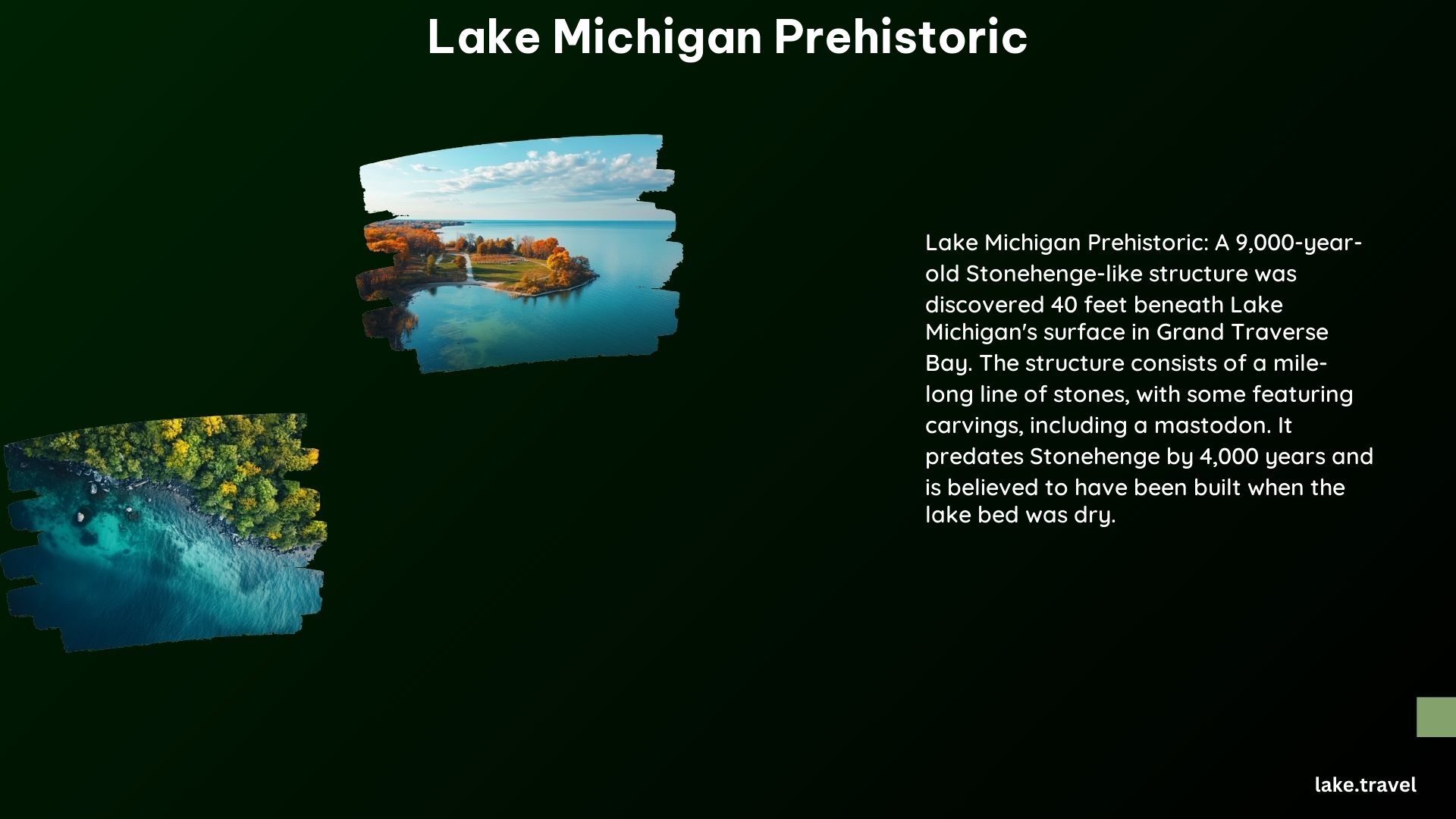Lake Michigan, one of the Great Lakes, has long been a hub of maritime history, with numerous shipwrecks and archaeological sites hidden beneath its surface. Recently, a remarkable prehistoric structure, reminiscent of England’s iconic Stonehenge, was discovered in Grand Traverse Bay, an arm of Lake Michigan. This underwater structure, dating back approximately 9,000 years, has sparked significant interest among archaeologists, historians, and enthusiasts alike.
The Prehistoric Structure in Lake Michigan

The prehistoric structure, discovered by Dr. Mark Holley, a professor of underwater archaeology at Northwestern Michigan University, consists of a series of stones arranged in a long line, over a mile in length, and an outer and inner ring of stones, 40 feet in diameter and 20 feet in diameter, respectively. The stones, ranging in size from a basketball to a compact car, are made of local granite and stand 40 feet below the water’s surface.
This structure is significant not only for its age but also for its similarity to Stonehenge, which was built 4,000 years later. The discovery provides a unique glimpse into the lives of ancient civilizations that inhabited the region during the post-Ice Age period, when the lake bed was dry and Grand Traverse Bay did not yet exist.
Comparison to Stonehenge

While the Lake Michigan structure shares some similarities with Stonehenge, there are notable differences. The stones in the Lake Michigan structure are much smaller than those at Stonehenge, and the arrangement is more linear and less monumental. Additionally, the Lake Michigan structure is not a megalith site like Stonehenge, but rather a long line of stones.
Other Prehistoric Sites in the Region
The discovery of this structure is not an isolated incident. Similar prehistoric sites have been found in Lake Huron, including the Alpena-Amberley Ridge, which dates back 9,000 years and is believed to have been used for caribou hunting corridors. These findings suggest that the region was once home to complex and sophisticated societies that utilized the land and water resources in innovative ways.
Preservation and Respect
Dr. Holley has taken steps to ensure the preservation and respect of the site by notifying the Grand Traverse Band of Ottawa and Chippewa tribes, who are the ancestral owners of the land. This gesture acknowledges the importance of preserving cultural heritage and preventing the site from being inadvertently destroyed.
Potential Theories and Unanswered Questions
The discovery of the Lake Michigan prehistoric structure has raised numerous questions about its purpose and the people who built it. Some potential theories suggest that the structure may have been used for astronomical observations, as a ceremonial site, or as a marker for important events or migrations. However, much remains unknown, and further research is needed to uncover the full story of this remarkable find.
Conclusion
The prehistoric structure in Lake Michigan is a remarkable discovery that sheds light on the region’s ancient past. Its significance extends beyond its age and similarity to Stonehenge, as it provides a window into the lives and practices of ancient civilizations. As researchers continue to study and explore these sites, we may uncover even more secrets about the history of the Great Lakes region.
References
- https://press.umich.edu/Books/A/Ancient-Life-of-the-Great-Lakes-Basin
- https://news.artnet.com/art-world/prehistoric-structure-lake-michigan-stonehenge-2432737
- https://www.thebrighterside.news/post/9000-year-old-stonehenge-like-structure-found-in-lake-michigan/
- https://arkeonews.net/the-mysterious-prehistoric-underwater-structure-beneath-lake-michigan/
